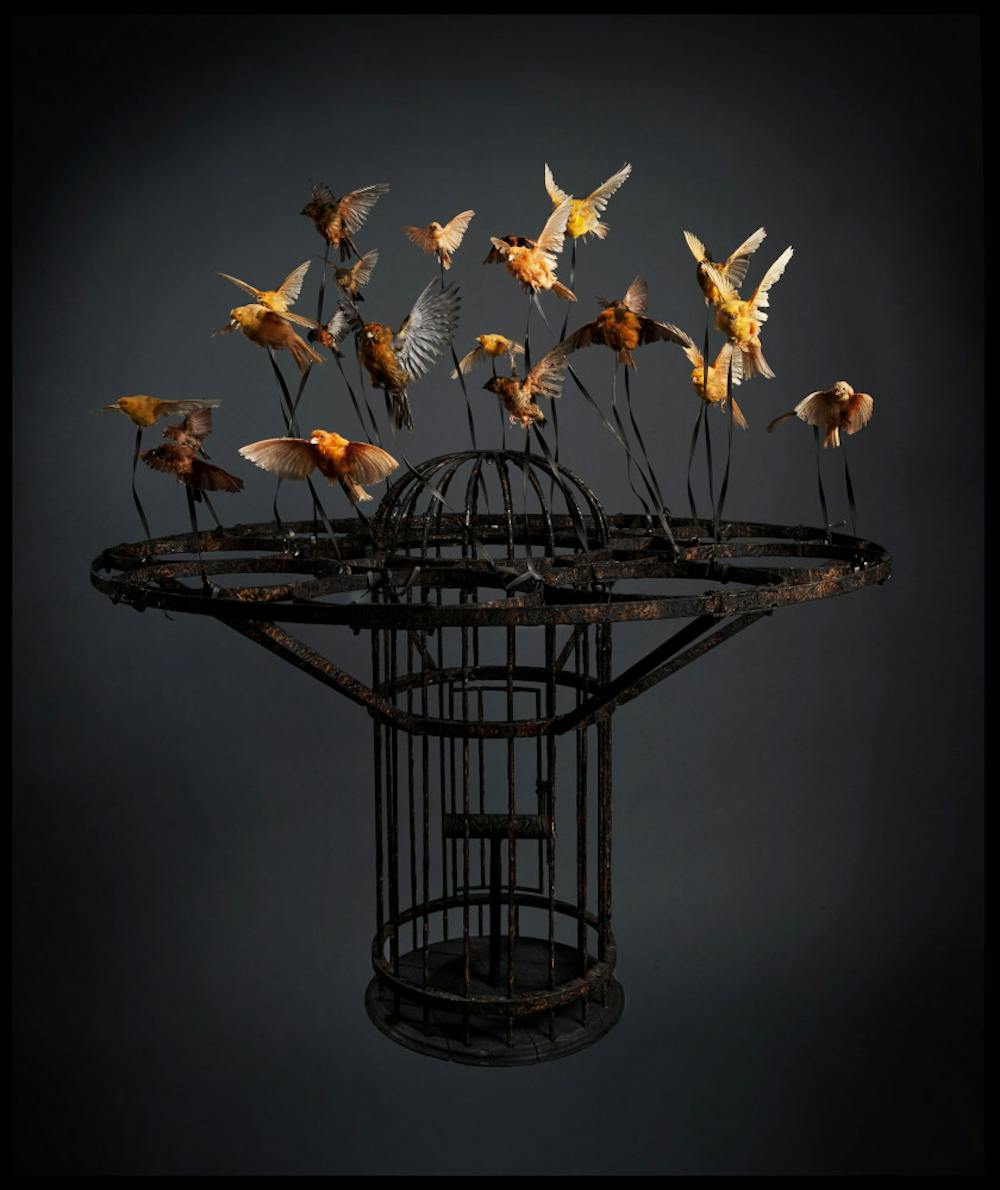Unless you’re careful when visiting “Dead Animals,” the newest exhibition in the David Winton Bell Gallery, you might trip over the taxidermied Labradors or crush the stuffing from the baby chick next to them. Also called “The Curious Occurrence of Taxidermy in Contemporary Art,” the show consists of the mounted, hybridized, sequin-encrusted and beheaded remains of our furry friends.
The works in this exhibit — believe it or not — are representative of a powerful trend that has spread through the most elite circles of today’s art world. Taxidermy is “showing up in art galleries … fashion advertising — there’s a resurgence of interest in it,” said Jo-Ann Conklin, the gallery’s director and curator of the exhibit.
Conklin said she was first struck by the presence of taxidermy as art in 2008. She recalled a piece by David Shrigley in which a kitten stands on its hind legs and holds a sign reading, “I’m Dead.” After that, she began to see more and more artists working with taxidermy.
Her interest piqued, Conklin decided to visit a taxidermy shop. “It was the first time I had ever been, and I was just overwhelmed by the effect that taxidermy had,” she said. She felt conflicted: fascinated to see the many exotic animals on display, but also disturbed, Conklin added.
Some of the artists, she explained, aim for people to come away with questions about our relationship with animals. “Taxidermy is a really loaded medium” with an “emotional, visceral effect,” she said.
The exhibit is about four years in the making and includes the work of 18 artists from New Zealand, Austria, Germany, France, England and other countries.
The process of loaning the art was “long and arduous,” Conklin said. Setbacks included the discovery that, before shipping, a piece had been ravaged by carpet beetles, a common pest in taxidermy. But it was worth it, she said. Opening the boxes as they arrived was “like Christmas.”
Leila Faulstich-Hon, a visitor to the gallery, singled out “Inert,” a wolf rug with a stuffed front half, as a thought-provoking piece. “If you use a pelt as an art piece and not for warmth … how messed up is it?” she asked.
Polly Morgan, a London-based artist featured in the exhibit and due to speak at a public reception Friday, belongs to another camp of featured artists focusing on death and rejuvenation.
Morgan learned traditional taxidermy but soon began to experiment with the positioning of the animals. “I quite often wanted to display them looking dead — I find taxidermy more convincing that way,” she said. “You don’t expect a dead animal to move, so the trick is suspended a little longer.”
Two of her pieces, simply called “Cormorant” and “Gannet” after the birds they incorporate, feature the bodies of the birds draped limply over framed pictures of nests, drawn with the ashes of their species.
Her other piece, entitled “Systemic Inflammation,” was inspired by a bizarre Victorian illustration of a proposed flying machine and features orange and yellow birds, representing flames, lifting a charred birdcage into the air. “I like the dichotomy of the birds essentially being free but still being utilized,” she said.
The image of fire, which Morgan associates with phoenixes and rebirth, parallels her broader convictions about taxidermy. “Taxidermy is a sort of resurrection,” Morgan said. “I reject the idea that taxidermy is morbid — I wanted to make it about the triumph of life over death.”
Damien Hirst’s “Away From the Flock” is also featured in the exhibition. Hirst summed up the piece, contributed by a collector, in four words: “It’s a dead lamb.”
Hirst explained in his book “On the Way to Work,” co-authored by Gordon Burn, that his attempt to preserve the lamb’s corpse by suspending it in formaldehyde is a metaphor for the fetishization of relics of Christ, another symbol of rebirth. Hirst is widely considered the wealthiest artist in the world, once raking in a record-breaking $198 million at a single auction.
Several artists will discuss the exhibit on Friday, Feb. 5 at the public reception in the Bell Gallery.





